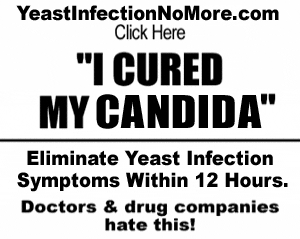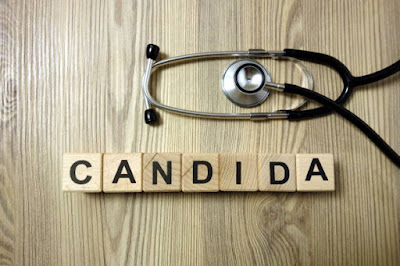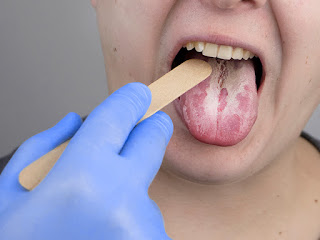Candida Yeast Infection Treatment : Desensitization (EPD ) For Candida
There is a relatively effective though one-dimensional treatment for candida yeast infection called immunotherapy. In this treatment yeast infection patients are ordered to avoid the consumption of basically all yeasty foods and sugary foods and are given allergenic substances in dilute doses normally in the form of oral drops or injection to enhance the immune abilities of the body and reduce the allergic response.
The method also called Enzyme Potentiated Desensitization (EPD) was developed by Len McEwen, M.D. (London) in the mid-60's. The newest form of this treatment is called Low Dose Allergens or LDA.
In this treatment the patients receive up to three injections every two months and for a maximum period of two years, depending on the patients response to the therapy. The enzymes are suppose to enhance the candida infection strength and may treat several other groups of allergens along the way.
The EPD treatment for candida yeast infection goes like this:
For a period of ten days before the first injection, the patients are given Sporanox, which is an anti fungal for systematic candida, and De-Nol an anti- gastric ulcer agent that reduces the ability of candida to plant its roots in the mucus linings of the intestinal tract.
For approximately 3 days before the injection, patients undergo a semi-fast in which they need to avoid the consumption of all food allergens combined with the intake of the following supplements that improve the effectiveness of the EPD treatment: Zinc, Folic acid and Vitamin D3.
The response of the EPD treatment for candida yeast infection varies among patients. Some patients may experience sudden and dramatic improvement that wears off in time while some need increased doses through longer intervals until improvement is maintained.
Either way, EPD is not a permanent solution for candida. EPD is after all a one-dimensional treatment that focuses merely on the dietary and allergy reaction factor that trigger candida overgrowth. EPD’s effects wear off in time and If you have significant gut problems, bacterial infections, parasites or systematic candida, EPD will not work.
The only way one can ever overcome candida yeast infection is by tackling all candida-contributing factors, the holistic way, not just the dietary or allergy triggering factors. By fixing the internal cause of candida overgrowth, all candida related symptoms would banish, permanently along with the feeling of increased energy, improved vision, health and well-being.

Pregnancy and Yeast Infection
Prior to discussing the complexity linking the chances of contracting Candida infections with pregnancy, we'll take a brief glance at the initial physiological reasons for the yeast infection ailment. However the question still needs to be answered, does pregnancy make a woman's body even more at risk concerning yeast infections? Many women about to give birth are worried about this. The truth is that Candida infection is twice as probable during pregnancy compared to situations outside of pregnancy. Yeast infection in the vagina is characterized by thick, white vaginal discharge with the appearance of cottage cheese and discomfort while having sex. Almost three-quarters of women in western nations will be afflicted by this kind of infection once in their lifetime and many of them will have to continue enduring
chronic Candida infections. As a matter of fact, Candidiasis, or yeast infection, is a fungal infection appearing locally or systemically with particular impact on women in western countries. The most frequent kind of yeast infection is vaginal infection of which the typical symptoms include a burning feeling and itching
especially around the vaginal area. Candida exists to a greater or lesser degree in the intestinal and genital tracts of most people, but fungal overgrowth can bring on painful and debilitating consequences and also significant health complications. Yeast in this medical context means single-celled fungi. The common name, Candida, applies to the strain of fungi often seen in the human body under normal conditions as well.
Different elements which may be internal, external, lifestyle-related or psychological then directly or indirectly form the context in which Candida multiplication comes about. As with many other medical problems, Candida overgrowth comes about because of group of factors and related interactions.
In addition, emotional stress affecting many women when pregnant and while expecting a child may as a consequence degrade the immune system and increase the chance of yeast overgrowth. Pregnant women also often develop fixations on sugar-rich or white flour containing foods. As traditionally, pregnant women are allowed, even pushed to obey such cravings, these sugars and refined carbohydrates increase even more the threat of yeast infection powered by these sugary environments. In pregnancy, a woman's body undergoes changes at several levels including hormonal, physiological and psychological. These changes conspire to engender excessive Candida overgrowth and the accompanying symptoms. Pregnancy-induced hormonal changes modify the vaginal context and make fungi more likely to grow beyond acceptable limits.
Ignoring Candidiasis can lead to systemic yeast infection, with significant negative effects both in terms of quality of life and overall well being. Since pregnant women may not use many of the antifungal medications or antibiotic treatments available to others, it is even more important to find another solution for candidiasis during this moment of childbearing. Finding a remedy for candidiasis in expecting women is crucial, because otherwise infection can be communicated from the mother to her baby through the birth canal during pregnancy or during
childbirth, or afterwards via breast-feeding.
The holistic approach using modifications in dietary and lifestyle changes and eliminating toxins, can stop all types of yeast infection and also prevent their recurrence safely and effectively for pregnant women and the babies that they are carrying. Did you hear the news about the 100% natural holistic methods that
can be used to remedy yeast infections permanently and safely?
Pregnant women who want a complete and lasting answer to candidiasis can use holistic methods to rid themselves of this condition by taking a set of specific home remedies to relieve the symptoms and by using holistic all natural guidelines that address the fundamental issues to tackle the real problem. Candida Diet - SECRET Dietary Treatment Revealed
Adhering to a well defined candida diet is the first move for dealing with yeast infections. Recent research indicates that the right diet plan may be highly effective in preventing certain health problems and chronic diseases, including Candida infections. Before discussing the connection between candida diet and its impact on yeast infection, we’ll take a quick look at what candida infection is and discuss the specific conditions that bring it on. Candida is the scientific name for single cell microbes to be found in small amounts in the most areas of the human body: the intestines, the genitals, the mouth etc. Although in the body that is healthy these microbes are kept in check by beneficial bacteria and an operational immune system, a combination of certain conditions can wreck this healthy balance. Candida can grow out of control and take on a root-like structure to damage the mucous membranes of the gut, invading the bloodstream and causing the well known symptoms related to yeast infection. As these microbes are mobile and can reach different parts of
the body, systemic as well as local yeast infection can occur. There are many factors that bring on yeast infection. Some of these factors are related closely to food. Observing diet plans that can prevent yeast infection from spreading is the first and one of the basic moves in and make to holistic Candida therapy. Adhering to the following diet rules, in combination with other nutrition and lifestyle principles, can bring positive results to your general health and particularly to your yeast infection problem: 1. Stop eating a refined sugar and carbohydrates. Refined sugar (which includes simple carbohydrates such as molasses and honey) and other refined carbohydrates (such as white flour, white rice, any type of cereals etc.) are all
food for candida. Consuming such foods can make candida breed. To prevent candida overgrowth, use Stevia instead of sugar and use whole grain non-gluten products (such as brown rice, buck wheat bread) to replace refined
carbohydrates. 2. Foods that contain yeast or mold (like white vinegar, mushrooms, calm, dried fruits, canned vegetables and some condiments) can also encourage Candida and should not be eaten. 3. To fight Candida your immune system needs to be strong. Using antibiotics can debilitate your immune system and kill off friendly bacteria. Therefore, many nutritionists recommend that their patients stop using antibiotics and reduce intake of dairy products that may also contain antibiotics. Since strengthening the immune system is an integral part of preventing yeast infections, daily consumption of garlic can lessen the likelihood of recurrent yeast infections.
4. Dairy products and cow’s milk products in particular, should be avoided to because they can lead to allergic reactions create excessive mucus and take longer to digest. Some of the main yeast infection factors can include allergies and digestive problems. Better alternatives to dairy products of Cow’s milk are organic goat and sheep’s milk products. 5. To stop Candida overgrowth, it is important to maintain the right acid-alkaline balance. That means the right "PH" level in your blood. PH is measured on a scale that goes from zero to fourteen where fourteen is the most alkaline, seven is
neutral and zero is the most acid. Your body functions best in the range of PH 7.35 and 7.45 for acidity in the blood. Any extra acidity makes for a context where candida multiplies. An alkaline food plan, which is based on consumption of
alkaline forming foods (foods with calcium, cesium, magnesium, potassium, sodium, almonds, green juices, and most fresh vegetables etc.) with moderate consumption of foods that form acids (most meats, fish, dairy and grain products) can help you regain your alkaline quotient to better control candida growth.
6. A study by Albert Einstein College of Medicine of Yeshiva University in New York revealed that eating foods rich in betacarotene (a natural substance that's converted into vitamin A in the body) could offer some protection against yeast infections. Remember that Candida diets can be very good for halting all kinds of yeast infections, but that they are only the first part of a full holistic therapy.
This article is based on the book, "Yeast Infection No More" by Linda Allen. Linda is an author, researcher, nutritionist and health consultant who dedicated her life to creating the ultimate holistic yeast infection solution guaranteed to permanently cure the root of candida and dramatically improve the overall quality of your life, naturally, without the use prescription medication and without any side effects. Learn more by visiting her website: Click HERE
 | | ADVT |
|




















0 comments:
Post a Comment